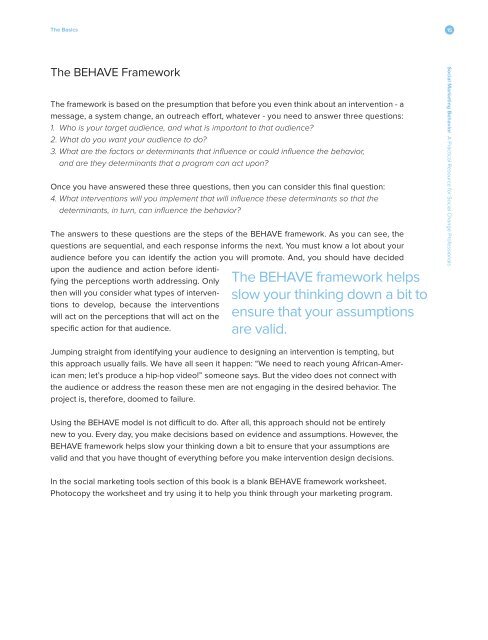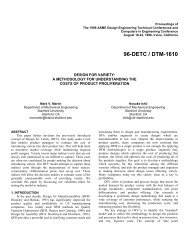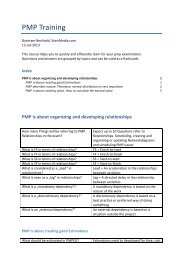Social Marketing
Create successful ePaper yourself
Turn your PDF publications into a flip-book with our unique Google optimized e-Paper software.
The Basics 15<br />
The BEHAVE Framework<br />
The framework is based on the presumption that before you even think about an intervention - a<br />
message, a system change, an outreach effort, whatever - you need to answer three questions:<br />
1. Who is your target audience, and what is important to that audience?<br />
2. What do you want your audience to do?<br />
3. What are the factors or determinants that influence or could influence the behavior,<br />
and are they determinants that a program can act upon?<br />
Once you have answered these three questions, then you can consider this final question:<br />
4. What interventions will you implement that will influence these determinants so that the<br />
determinants, in turn, can influence the behavior?<br />
The answers to these questions are the steps of the BEHAVE framework. As you can see, the<br />
questions are sequential, and each response informs the next. You must know a lot about your<br />
audience before you can identify the action you will promote. And, you should have decided<br />
upon the audience and action before identifying<br />
the perceptions worth addressing. Only<br />
then will you consider what types of interventions<br />
to develop, because the interventions<br />
will act on the perceptions that will act on the<br />
specific action for that audience.<br />
The BEHAVE framework helps<br />
slow your thinking down a bit to<br />
ensure that your assumptions<br />
are valid.<br />
Jumping straight from identifying your audience to designing an intervention is tempting, but<br />
this approach usually fails. We have all seen it happen: “We need to reach young African-American<br />
men; let’s produce a hip-hop video!” someone says. But the video does not connect with<br />
the audience or address the reason these men are not engaging in the desired behavior. The<br />
project is, therefore, doomed to failure.<br />
Using the BEHAVE model is not difficult to do. After all, this approach should not be entirely<br />
new to you. Every day, you make decisions based on evidence and assumptions. However, the<br />
BEHAVE framework helps slow your thinking down a bit to ensure that your assumptions are<br />
valid and that you have thought of everything before you make intervention design decisions.<br />
In the social marketing tools section of this book is a blank BEHAVE framework worksheet.<br />
Photocopy the worksheet and try using it to help you think through your marketing program.<br />
<strong>Social</strong> <strong>Marketing</strong> Behavior A Practical Resource for <strong>Social</strong> Change Professionals

















